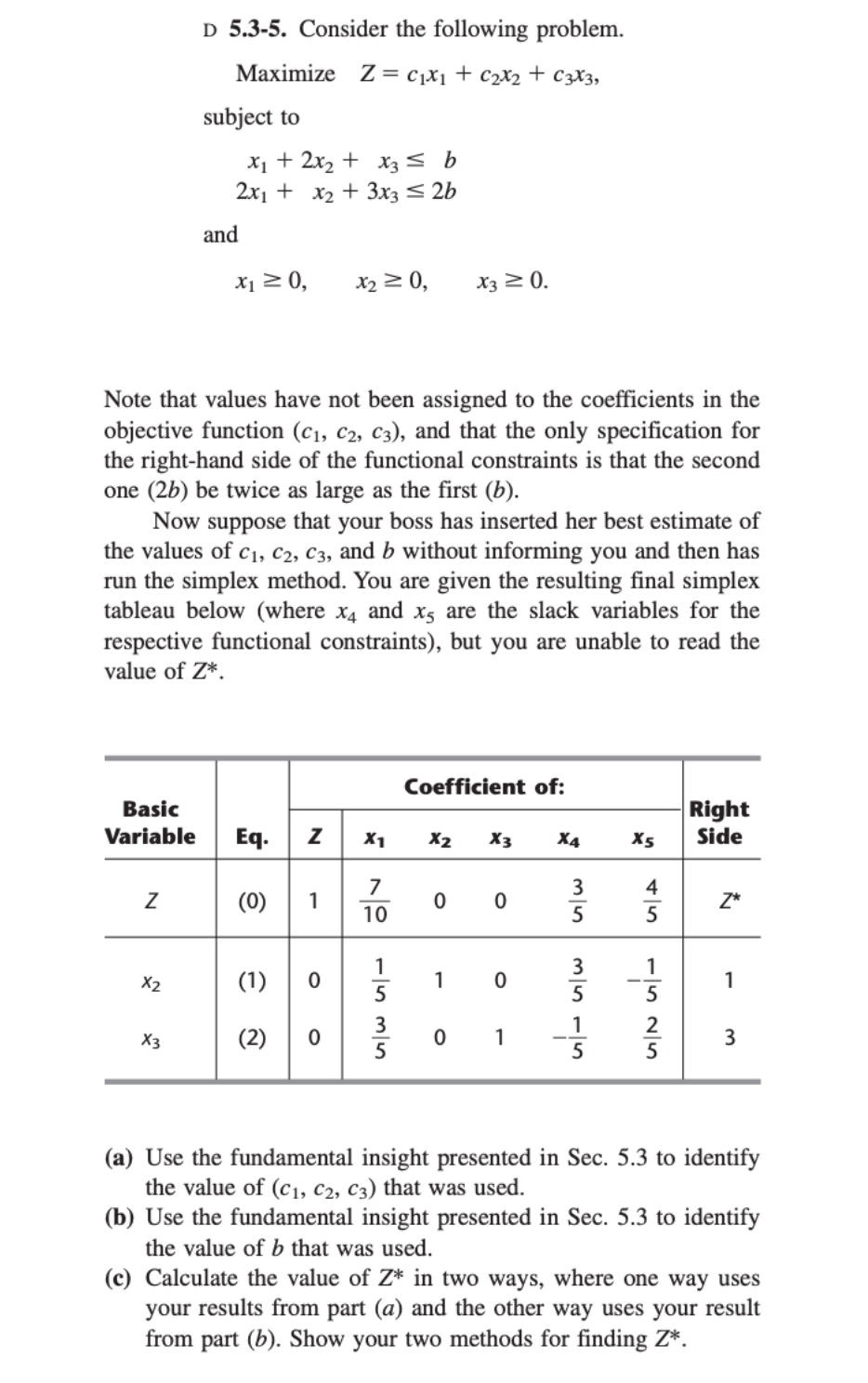Answered step by step
Verified Expert Solution
Question
1 Approved Answer
D 5.3-5. Consider the following problem. Maximize Z = CI*1 + C2*2 + C3X3, subject to x, + 2x2 + x3 5 b 2x1 +

Step by Step Solution
There are 3 Steps involved in it
Step: 1

Get Instant Access to Expert-Tailored Solutions
See step-by-step solutions with expert insights and AI powered tools for academic success
Step: 2

Step: 3

Ace Your Homework with AI
Get the answers you need in no time with our AI-driven, step-by-step assistance
Get Started


